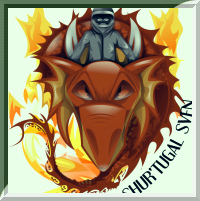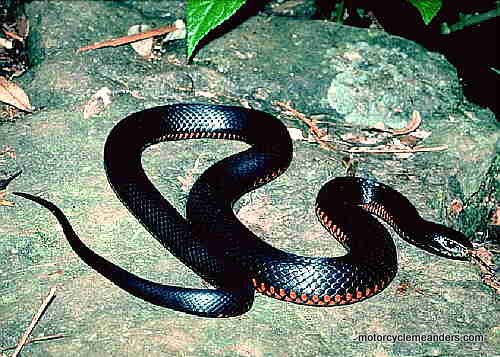
 |
|
First Aid
So, here I simply recount a few tips I have picked up on the road. First Aid Kit On my Big Trip North from Aug-Oct 2009, I met up with a group of 4x4 travellers at Coward Springs along the Oodnadatta Track. We had a great time together over three nights at Coward Springs, William Creek and Coober Pedy. Sue from Narrandera was a nurse and we got talking about first-aid kits. We talked about the essentials for a first aid kit. So Sue did an audit of mine. It mostly passed muster. But a couple of useful tips emerged from the audit. ÌRevise the contents of your first aid kit · First, I found it valuable to re-discover what was in the kit and to be told the specific purpose of each item. I would strongly recommend that riders and 4X4 enthusiasts alike make a point of revising the contents of their first aid kits and the uses of each item on a regular basis. ÌHave sanitary pads and pressure bandage · Secondly, I learnt that I was missing two valuable items. These were a pressure bandage and some sanitary pads! Sueís expert view was that the combination of the two was the most effective way of stemming serious bleeding; and this is a likely thing one would need to do if attending a major road or bush-bashing accident. So, she gave me a few sanitary pads and I subsequently bought a pressure bandage. I now have a better equipped first aid kit. Meeting and Greeting Snakes Part of the dinner Ė or after dinner Ė entertainment at the tavern adjoining the camping site in Alice was a show that an employee of the local reptile park presented (before we were eventually subjected to the regular country singer). He had lizards and snakes or various sorts, with his 8 year old python being a big hit as it slithered from shoulder to shoulder along a line of patrons. He passed on some tips about meeting snakes and dealing with snake bites. Some of this I half knew, but some was totally new. The key points were as follows: 1. If you have a red bellied black snake on your property, donít kill or remove it. Why? Its favourite food is brown and tiger 2. Snakes canít hear or see. Thereís no point yelling at one. But they have good smell sense and will react to movement. They sense vibrations. So, if you whack the ground with a stick, for example, it will scare off a snake that doesnít feel threatened. But what are your options if a snake is close by? A snake has a striking ability within half a metre. You wonít have time to react if it strikes. So, if itís within half a metre of you, just donít move. Stay perfectly still. The snake wonít see you and will likely ignore you, even to the point of slithering over your foot. You might at that stage wish you were wearing gaiters. Thereís just one potential complication. All this is subject to your not smelling like a rat or mouse. If you do, the snake will assume you are; and strike. 3. If youíre outside the half metre striking distance, you can walk backwards very slowly until you feel itís safe to turn and run like fury! 4. What if you get bitten? The first thing to note in this context, we were told, is that Australian snakes, unlike many of their overseas cousins, have very small fangs. So you wonít get the two holes in your skin often depicted. Youíll get a scratch across your skin. Itís important that you do not wipe or wash off any venom on your skin. Thereís no point describing the snake by its colour. An orange or red or some other coloured snake may well be classed as a Ďblackí snake for anti-venom selection. And if they get the anti-venom wrong, they might as well not have given you any. It wonít work. This is where the venom on your skin becomes important. It can be used to identify the right anti-venom. Whatís the first aid you need to administer before you get to the hospital for anti-venom? Itís the crepe, pressure bandage. I knew that much, but not precisely why (although I thought I did); and I would not have applied it correctly, having now seen a demonstration. The most likely places youíll get bitten are lower arms or legs. The demo was on the arm, but the same would apply to legs. You start wrapping the bandage around the fingers, leaving the tips exposed. You continue wrapping firmly, but not tightly, along the arm right up to the shoulder. Would you have done that? If the finger tips start to go blue, the bandage is too tight. This can keep you alive for days as opposed to only hours you might otherwise have. Why the bandage? Well, because the fangs are so small, the venom doesnít get into the blood stream. It stays in the lymph. The bandage presses the lymph against muscle, thereby stopping or, at least, dramatically slowing the movement of venom within the lymph. So, there you have it. All you need to know about snakes. And now I have a second use for my pressure bandage that I added to my first aid kit on the advice of my consulting nurse from Narrandera. |
 snakes. If you have the red bellied black, itís likely you wonít have browns or tigers. Both brown and tiger snakes have been responsible for deaths from their bites. There has not been a recorded death from a red bellied black snake bite. I didnít know that. But I recalled that we used to have both red-bellied blacks and brown snakes on our property in West Pennant Hills.
snakes. If you have the red bellied black, itís likely you wonít have browns or tigers. Both brown and tiger snakes have been responsible for deaths from their bites. There has not been a recorded death from a red bellied black snake bite. I didnít know that. But I recalled that we used to have both red-bellied blacks and brown snakes on our property in West Pennant Hills.